November 26, 2000 - Cretaceous Fossils - Macon Co, AL
The publication of Jim Lacefield's new book, "Lost Worlds in Alabama Rocks: A Guide to the State's Ancient Life and Landscapes" led the BPS to this new site for a field trip this month. In previous BPS field trip reports, I have noted the abundant plant fossils that we have found at various surface mines in Walker and Jefferson Counties. These sites include plants from the Coal Age in Alabama, dating back to about 310 million years. It was interesting, therefore, to learn from Jim's book that it was possible to find plant fossils in Alabama from a much later period, the Cretaceous period. Jim agreed to lead the BPS to a site where he had found fossil leaves, dating back to about 85-90 million years (Late Cretaceous). The site is in the Tuscaloosa Group of sediments (the earliest part of the Cretaceous found at the surface in Alabama). About 20 BPS members and guests attended the field trip, which took place on a cool but pleasant and mostly sunny day.
| The site was certainly different from the surface mines. At the surface mines, fossils are usually impressions, molds, and casts in shale, or solidified mudstone. Often, these fossils include the carbonized remains of the original plant material. At the Cretaceous site, however, the leaf fossils were in a light gray mud just a few inches below the ground level, concentrated in a fairly small area near a roadcut. The types of leaves found were almost exclusively angiosperms bearing a strong resemblance to modern varieties. | 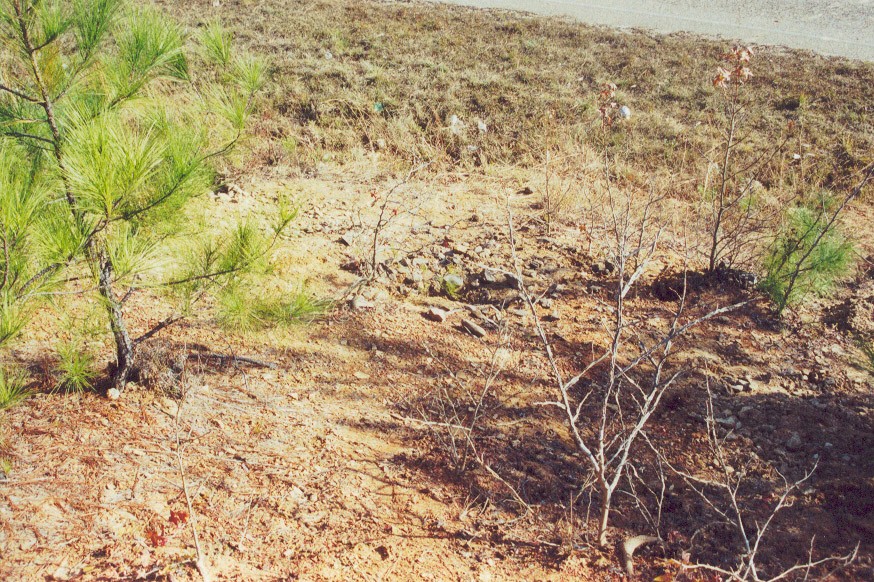 |
| Figure 1: Viewing of digging site towards road. The hole is where nice brown Cretaceous leaf fossils were found. |
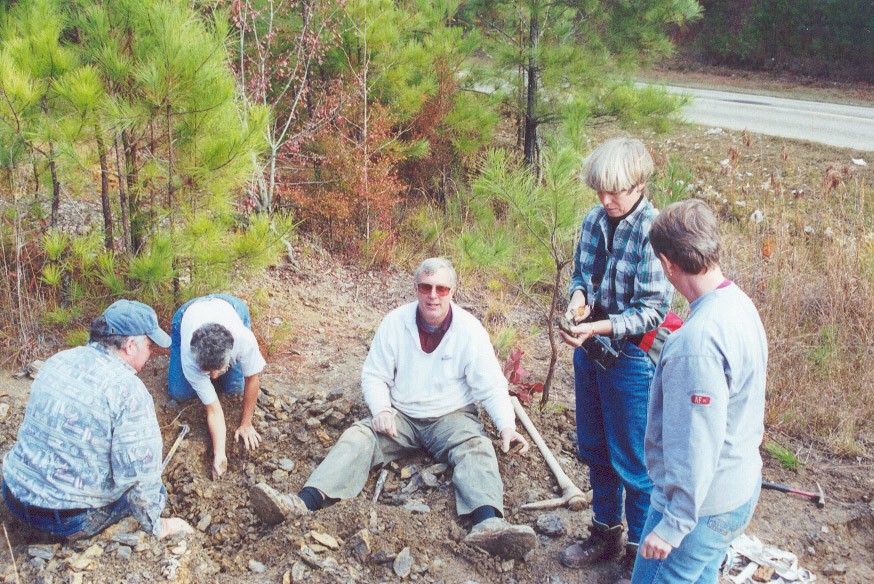 |
| Figure 2: Group at area where the blacker leaf fossils were found. From left to right: Dave Shepherd, Kathy Twieg, Jim Lacefield, Vicki Lais, and Marcella. |
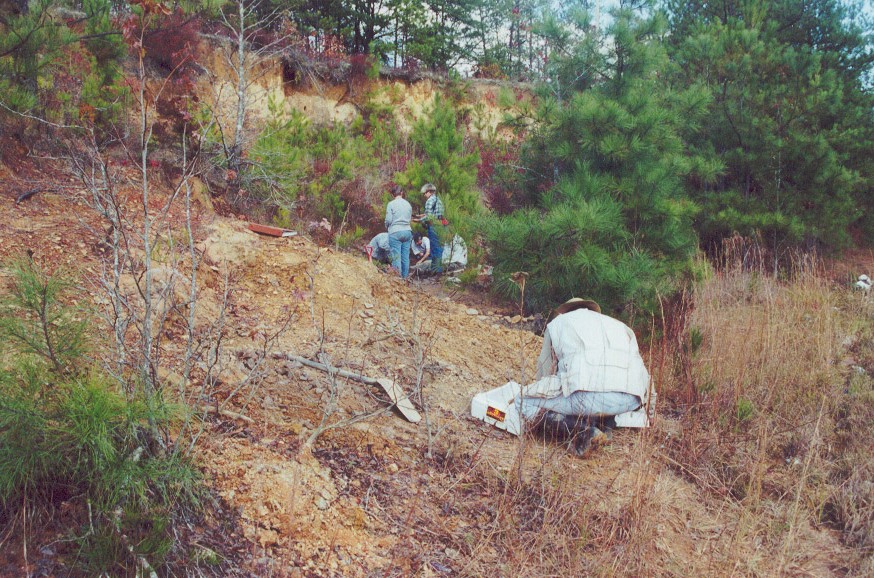 |
| Figure 3: In the foreground, Ashley Allen is collecting the darker brown leaves. In the background is the group in Figure 2 |
| According to Jim, the angiosperm species included Salix (or willow),
which represented greater than 90% of the specimens, and two members of
the Lauraceae (or laurel family). The Salix leaves tended to be long
and thin with a single dividing vein and very little additional detail.
Often, stem attachment points were found, but it was rare to get a
complete leaf on one slice of mud. | 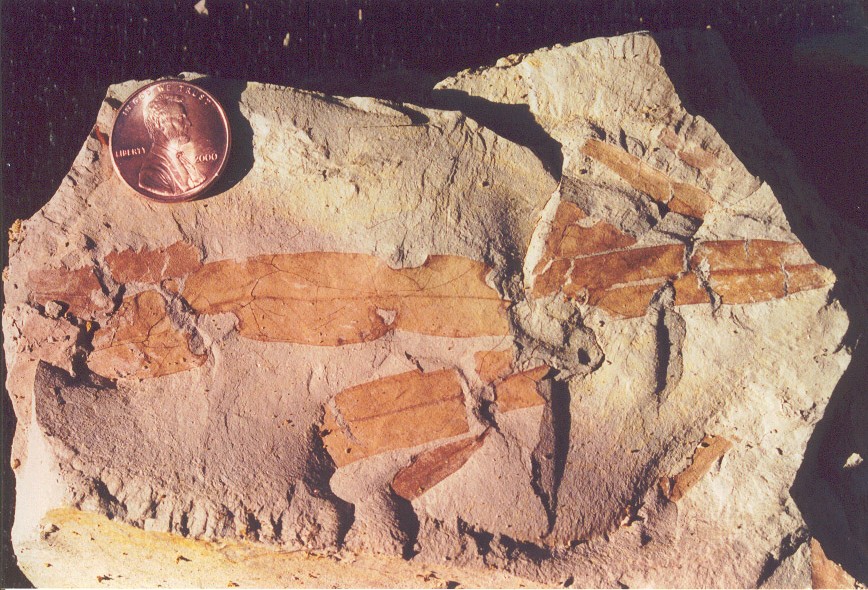 |
| Figure 4: Examples of Salix (willow) leaves showing the distinctive brown color characteristic of one part of the site. |
| Several examples are shown in the photographs which accompany this report. Some are also shown on page 81 of Jim's book. The Lauraceae leaves tended to be Cinnamomum, a possible Sassafrass. These had a distinctive vein structure which can be seen on page 82 of Jim's book. Jim also found what he thinks are probable flowers in different stages of decomposition, representing possibly 3 different species. The "flowers" he found included a willow twig with catkin attachments (no catkins were found) and two small but identical unidentified (possibly laurel) flowers with crumpled petals. | 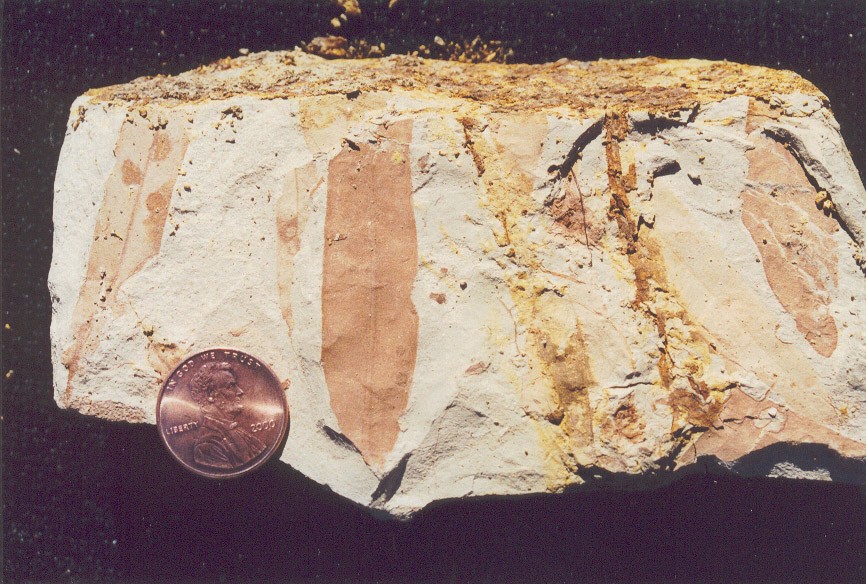 |
| Figure 5: One half of a divided mud plane showing beautiful brown Salix leaves. |
| An interesting aspect of the site was how the color of the leaf fossils
changed with position. At the left side of the site, the color was a
very light brown, while near the middle it was a darker shade of brown.
About 20 feet from these areas, the fossils are completely black and
often incomplete. Presumably, the color is not the same as the original
color, although modern angiosperm leaves look remarkably similar to the
dark brown fossils after they achieve their fall color. The best quality fossils were these dark brown ones. | 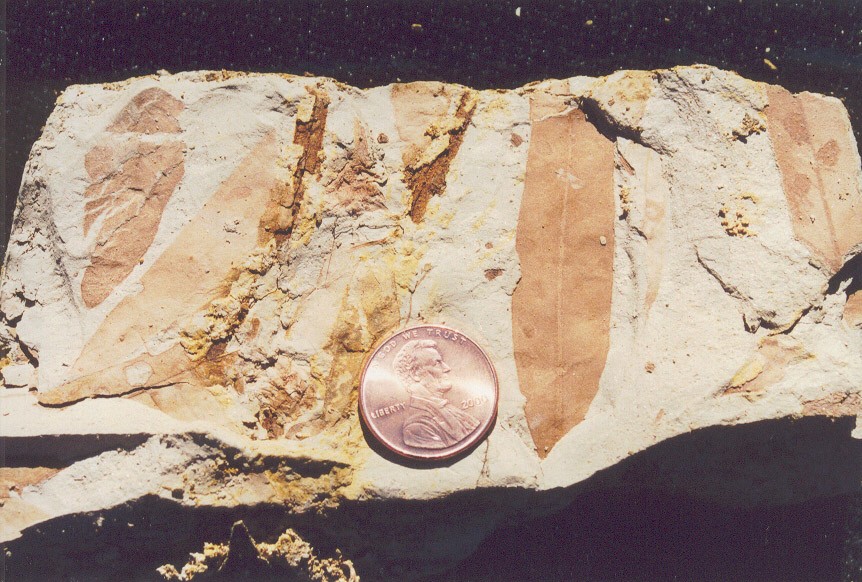 |
| Figure 6: The other half of Figure 5, showing virtually identical colors and structure, with no sense of direct or inverse impressions being given. |
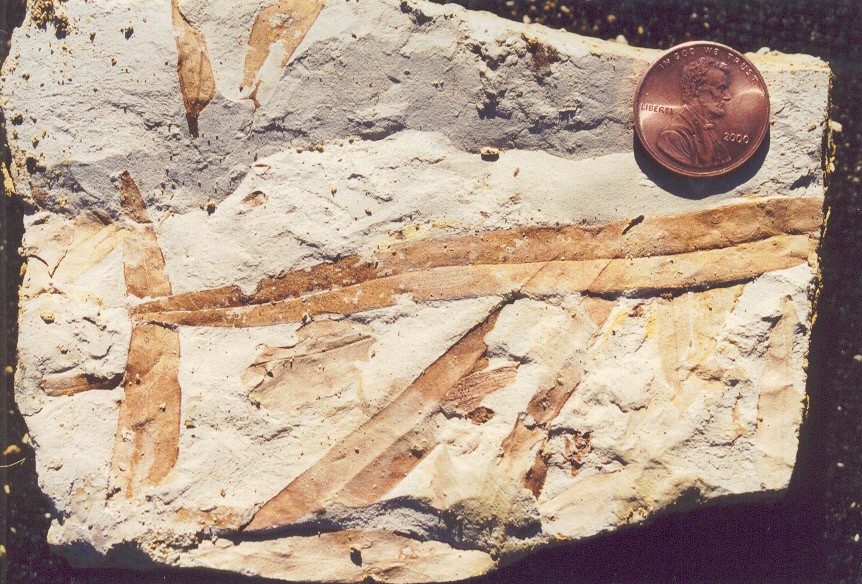 |
| Figure 7: Beautiful thin Salix leaves. |
The area where these were located was found by Bruce Relihan, who generously shared the find with others. The illustrated specimens are mainly from Bruce's area, and some are very beautiful. Most remarkable is how different these plants are from the coal mine plants. At the coal mine sites, we often find scale tree bark impressions, ferns, and pith casts of giant horsetails. At the Cretaceous site, we mainly found rather normal-looking leaves - no bark impressions and no ferns at all. By this time, many of the Coal Age plants were extinct and had been replaced with more modern-looking species.
| The blacker leaf fossils were more like coal age fossils. These looked
like the carbonized remains of the original plants, while the brown
ones seemed to have iron deposits replacing the original material. The
black fossils seemed more fragmentary, and also more concentrated in
random assortments than the brown leaves. In the area where these
blacker leaves were found, we also came across what appeared to be
lignitized wood. Some of this was layered as in a coal seam. | 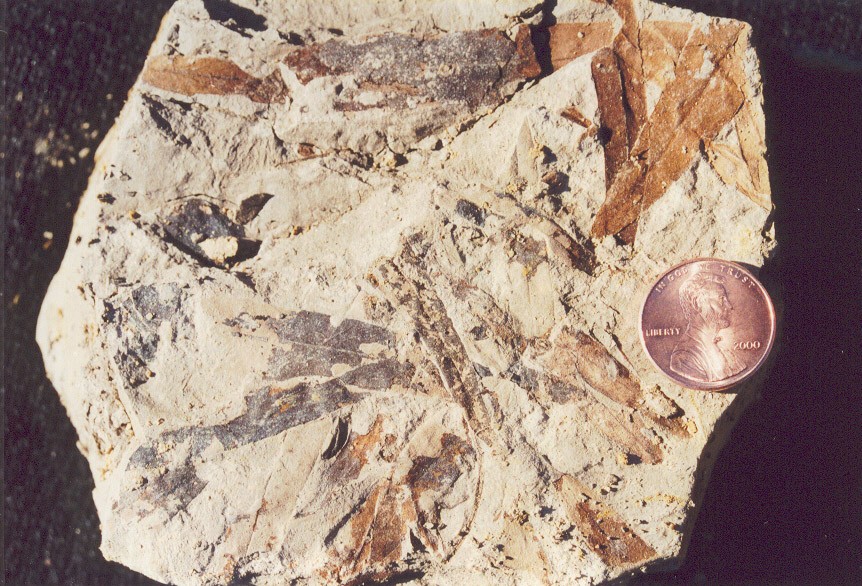 |
| Figure 8: Small mud slab showing a mix of black and brown Salix leaves. |
The fact that the fossils were found in clay, and not rock, is certainly interesting. It is difficult to understand this, and it suggests that the area where these leaves lie has not changed much during the past 85-90 million years. If it had been under water, there would presumably have been more deposition over the area and conceivably the clay might have solidified under pressure. Jim thinks the site possibly represents an upland bog in the process of being filled in with fine-particled sediment.
Note that it is also possible to find Coal Age Alabama fossils in clay, as Jim notes on page 65 of his book. The distinctive color of the clay where the fossils were found helped to tell us where to look. Just across the street from the site, we found mostly a reddish clay with a presumably high iron content. However, this clay included no fossils. The gray clay was more homogeneous than this reddish clay, and provided high quality fossils.
Cleaning clay fossils is another issue. With shale, you can simply wash off dirt or scrub off mud with a brush. With clay fossils, washing has the risk of damaging the fossils. The procedure I used to clean the specimens I brought home involved using an air blower usually used to blow dust off of photographic negatives, followed by gentle brushing with a small paintbrush. Even after this, the long-term storage of such fossils may require something extra. When extracted from the ground, the mud was a little wet, but after a while it becomes dry and more brittle. The best time to extract these kinds of fossils is when they are a little wet, because then the mud breaks apart into planes a lot like shale. After drying this might not work. Jim recommended that after the specimens are completely dry, it might be worth placing them into a 50% Elmer's glue for long-term preservation. Jim notes that the clay to be preserved in the Elmer's solution needs to be very close to dry when the solution is applied through soaking for 5 - 10 minutes, otherwise the surface may appear cloudy. He recommends that excess solution be then gently dabbed off the leaves themselves, and further that the specimens should be dried thoroughly before much handling.
In summary, this was a very interesting field trip for the BPS. It was interesting to venture into new territory in Alabama's past, and in particular to focus on the plant life, rather the marine life, of Alabama Cretaceous history. Thanks to Jim for his excellent book and for taking us to the site! I also thank Jim for comments on this report that improved its accuracy.
--Edited by Vicki Lais
